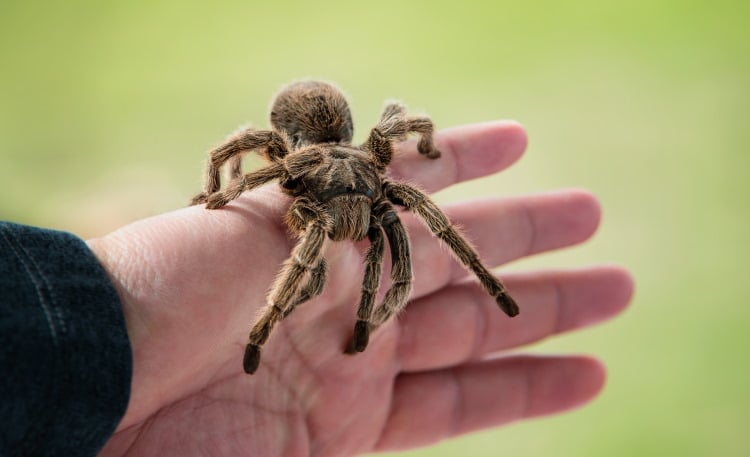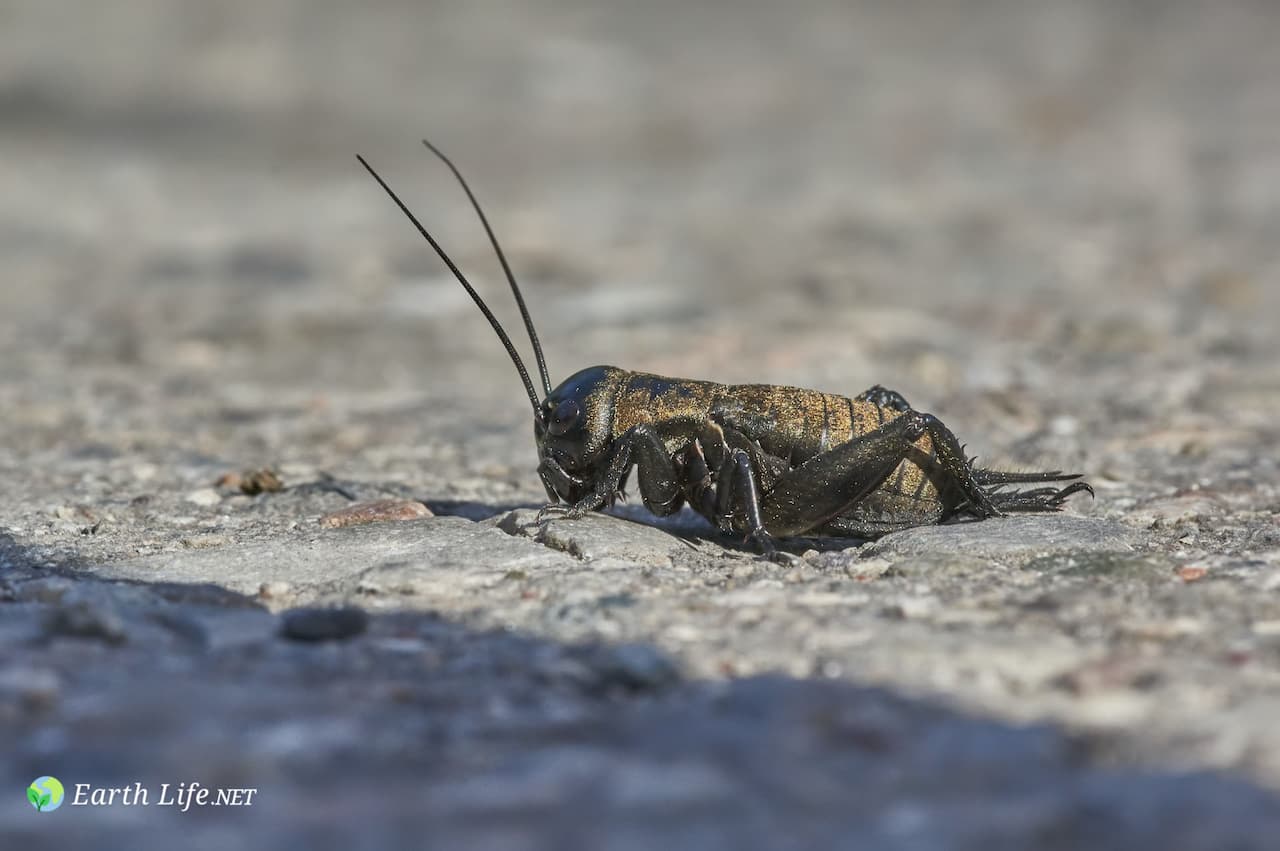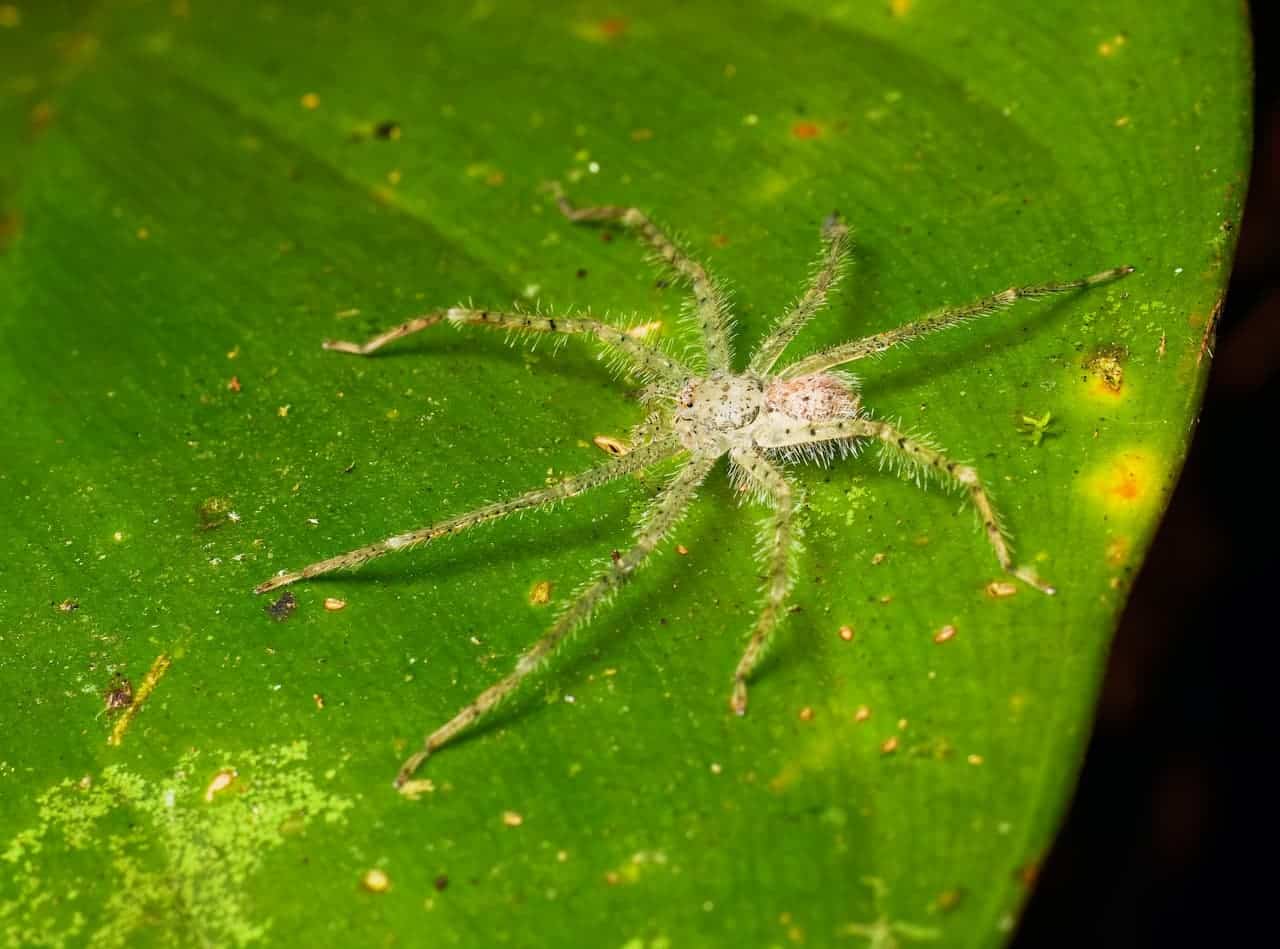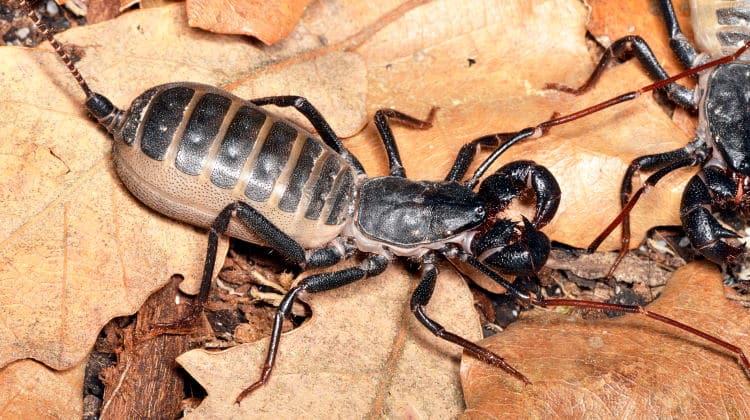Tarantula Care Sheet: How To Look After Your Pet Tarantula
Tarantula Care Sheet: How To Look After Your Pet Tarantula
Tarantulas are members of the Arthropod class Arachnida. The class Arachnida contains several orders, one of which, the Aranaea, contains all the animals properly called spiders.
The order Aranaea has three major divisions called sub orders: the Mesothelae, the Mygalomorphae and the Araneomorphae. The large spiders commonly called tarantulas belong to the sub order Mygalomorphae. The Mygalomorphae contains more than 2,200 species of spider, about 800 of which are normally considered to be tarantulas.
The term ‘Tarantula’ is not a proper taxonomic category, though most people will know what you mean when you use the word.
As with all pets, invertebrates included, it is important to make sure you have the correct equipment to house and care for your pet tarantula before you buy it.
Though very often in pet shops you can buy them complete with housing these days. Many tarantulas have died in the first few days because their new owner hasn’t prepared a suitable home for them. You also need to think about what sized animal you are buying.
Most small tarantulas come in containers that they can be kept in for a some weeks now-a-days. Personally I prefer buying tarantulas as young spiderlings; this way you have all the pleasure of watching your spider grow. You can collect the skins as it moults and (if you buy a text telling you how) set the skins to look almost life-like, giving a series of permanent images of your pet.
Finding a Home (Tank Or Cage)
Pet shops will sell suitable tanks in glass or plastic and the size should not be less than about 25 cm by 15 cm by 15 cm high for a medium sized tarantula. If you wish, you can to create a tank that tries to provide the spider’s natural habitat – with leaf litter, logs or bark etc.
Like many arachnids, tarantulas are not overly social animals; and if you house them well you must be prepared for the fact that they will hide away much of the time. This should not be a problem and there will still be times when you can observe them. If you design the tank well, you will be able to check up on them even when they are in a burrow.
A bare unadorned cage will keep your tarantula alive, but not necessarily sane – and the behaviour you observe will not be natural.
Different species of tarantula live different lives; some species are primarily arboreal (live in trees), some are borrowers. Whatever the species you keep, you will need to adapt the basic care instructions to the species. Thus an arboreal species needs to be kept in a cage that is taller than it is wide, with wood to climb on and a shallow substrate. Whereas a burrowing species will need a good depth, up to 10 cms depending on the size of the animal, of leaf mould or friable compost to burrow in.
Most species like a little, to a lot, of humidity and keeping the substrate damp will supply this. Whatever you use as a substrate, if you buy it commercially, make sure it is free of pesticides or chemical pollutants and so on; it is also best to sterilise it.
A few minutes in a microwave will do this, but be sure to remove any stones first and to stay and watch… other people in your home will not appreciate you setting the microwave on fire! These items are combustible, common sense is needed as usual.
You can sterilise bark and wood in a regular oven. Set the oven to 200 degrees F. and leave the items in the oven for an 40 minutes to an hour. Wood and bark should not spontaneously combust at this temperature.
Temperature
A temperature of 21-24 degrees centigrade is required for most of the tarantulas that you should buy as a beginner. If you have a centrally heated room which stays at that temperature all the time, then you won’t need extra heating during the winter. But you may need some between Spring and Autumn when the heating is switched off.
A good pet shop that sells reptiles and spiders will have a variety of thermostatically controlled heating devices including underground cables, heating mats and hot rocks.
Tell them the size and type of tank that you are using and they should be able to recommend a suitable heater for you. Personally I have found heatmats (with the cage half on and half off) work fine; though you may not need this precaution if you are using a thermostatically controlled device. Red-bulbs are not generally recommended for tarantulas.
You will need a fairly good lid on the cage. Tarantulas, even the ground dwelling species, can climb and they are often stronger than they look. Given a chance they will escape, especially adult males who are pre-programmed to roam.
If you keep a whole room heated, this is not such a bad problem. I have recovered tarantulas up to 3 months after they escaped (granted the external walls were not well damp-proofed and tarantulas were not the only things to escape).
The humidity in the tank should not be less than 50-60% and you should buy a little humidity gauge to stick on the inside of your tank. If the humidity drops below 50% your tarantula may die during its next moult.
What To Feed A Tarantula
Crickets and locusts are usually available from pet shops that sell tarantulas and reptiles – and you can try other livestock which you catch yourself, such as moths and caterpillars. Some will even eat earthworms.
A tarantula of about 3-4 cm in body length will eat 8-10 crickets each week, although it will survive on less. You can (in an emergency) also feed your tarantula on cubes of beef heart – though this will be lacking nutrients if it is the sole diet.
Like most arachnids, tarantulas seem happier with a bit of variety in their diet. The prey items you feed your tarantula should be quite a bit smaller than the tarantula. Small spiderlings can be fed on large aphids, flightless fruitflies and newly hatched crickets (called pinheads in pet shops). As you spider moults and grows, so the size of the prey it can eat will increase.
Water is vital to your pet tarantula. It can survive for weeks without food, but quickly die without water. A small container such as a coffee jar lid half-filled with water will provide an oasis of drinking water for larger specimens and help keep the humidity up.
As your pet tarantula grows it will regularly moult (shed its skin), 2-3 times a year in the case of the half grown individual. Signs of an approaching moult are darkening of the colour and stopping feeding. Each time it moults, it will spin itself a special moulting web to moult on.
When feeding stops, remove any live food in case they irritate the spider (or worse, nibble it while it is helpless during the moult). Normally the spider will turn on its back to moult and lie still in that position for several hours. Do not disturb it in any way at this time, as activity may prove fatal. Feed it about 4-5 days after moulting when its new skin has hardened.
Tarantulas, like many other spiders, are strange animals in that males live much shorter lives than the females.

In Chilean Rose tarantulas for instance mature males will live for about 2 years, while mature females will live for up to 15 years. In some species of tarantula, the females can live for up to 25 years or longer. So it is worth taking this into consideration when choosing whether or not to keep a tarantula; they are pets for life – even more so than cats and dogs.
Breeding Tarantulas
If you decide to keep more than one tarantula as pets, you may in time want to try breeding them. You really should not try this until you are quite familiar with your spider. Spiders, with few exceptions, are raised individually – which is how they live in the wild.
So if you wish to breed, you will need to introduce the adult male into the female’s cage and not the other way around. Before hand make sure both are well fed (you can over feed a tarantula; it will not eat what it doesn’t want) then remove any live food.
Once you have introduced the male, there is little you can do except watch in fascination. After the mating you should remove the male if he is still alive – which he may well be – especially with species like the Chilean Rose.
Some time later, the female will want to spin a special web to hold the eggs. If she is a burrowing species, she will want to do this at the bottom of a burrow. Therefore it is best if you have her housed so that she can dig a burrow; having a larger cage for gravid females does not hurt.
She will lay the eggs, wrap them up and then guard them. Once the spiderlings have hatched, you will need loads of small containers with leaf mould to house them. You will also need a ready supply of fruitfly or pinhead crickets – be ready!
Handling Tarantula Pets
Handling your pet tarantula is something many people desire to do. This is all right in small amounts, but tarantulas are not really happy on your hands because your flesh damps out the vibrations they use to sense the world.
Handling is fun though, though it needs to be done carefully. First off you should know that if you drop a ground dwelling species and it hits the floor, it will most likely die.
Secondly, like all animals, your spider will be sensitive to your emotional state to some extent; it will detect your fear and this will disturb it.
If you are unsure, work first with someone who knows what they are doing. This way you will learn to generate the calm atmosphere that makes handling work. If you buy your spider as a spiderling, then handling is easier as you can get to know each other as it grows. By the time it is an adult, it will be as confident as you are of being handled.
Having said this, different tarantula species – and even individuals within a species – have different temperaments and some spiders just handle better than others. Some species are naturally more aggressive and should never be handled.
Besides the danger to the spider, there is also the possibility that the spider may bite, or flick urticating hairs. Spiders will bite, some more readily than others… and (though no-one has ever been recorded as dying from a tarantula bite) if you are bitten you should consult a doctor. Further more just because you have been bittern a couple of times and it didn’t hurt at all, does not mean you are safe. Biting is a twofold process, puncturing your skin with the fangs and then injecting venom. Tarantulas will bite without injecting venom, this is called a “dry bite”.
Urticating hairs are hairs on the abdomen of some species; they are barbed and the spider can flick them off his abdomen with his legs. If they get into your eyes you will need to seek medical attention.
Never release pet tarantulas into the wild. With the electronic resources available these days, you can always find someone to take them off your hands. By releasing them into the wild you are either sending them to an unpleasant death, or initiating another biodiversity crisis. The USA in particular already has enough introduced tarantulas running wild.
Recommended Species For Beginners
There are quite a few species of tarantulas available commercially these days. Between them, they offer a range of difficulty in rearing and breeding. For your first tarantula you don’t want an aggressive, difficult to keep or very expensive species.
The following are all easy to keep and are therefore recommended. However, if you go to a pet shop, before you buy have a good look at the tarantula. If it has no water, then it is not well cared for. If it seems lethargic, it is also quite possibly maltreated and dying. In either case I would leave the shop and look elsewhere. As a general piece of advice, breeders are better to buy from than mere sellers.
- Chilean Rose Grammostola rosea, or G. spatulatus, or G. cala
- Entre Rios Grammostola inheringii
- Curly Haired Brachypelina albopilosa
- Red Rump Brachypelina vagans
- White collared Pterinopelma saltator
Lastly, if you are based in the UK (or not) you should check out the The British Tarantula Society, the world’s oldest on-going tarantula soceity.
References
- W. J. Baerg, (1977) The Tarantula. Fitzgerald Publishing, London
- K. Hancock and J. Hancock, (1993) Sex Determination Of Immature Theraphosid Spiders From Their Cast Skins
- K. Hancock and J. Hancock, (1993). Simply Tarantulas: A Guide for the Beginner
- K. Hancock and J. Hancock, (1993). Tarantulas: Keeping and Breeding Arachnids in Captivity
- A. M. Smith, (1995?) Tarantula Spiders Tarantulas of USA and Mexico. Fitzgerald Publishing, London





